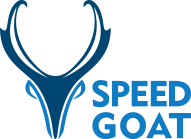Projects
We specialize in data management, wildlife biology’s Achilles’ heel.
Our customized statistical software helps wildlife management agencies explore data, run analyses and generate reports that can aid in formulating management plans, and we work with our collaborators to design systems that close the workflow loop from data collection to decision making. Historically, biologists collected data as time and money allowed, and, after serving its designated purpose, that data was often stored on old desktop computers or in dusty notepads tucked in drawers, not accessible for other analyses or as part of a long-term dataset. Nowadays, as new technology from GPS collars to remote cameras rapidly expands, so does our ability to collect voluminous amounts of data. But how biologists house that data and incorporate it into multiple analyses can still lag behind. (Our personal motto: Excel is not a database nor a reliable data management tool.) Our collaborative, workshop-based process helps our collaborators refine their data collection techniques. Then we design database systems to store that data so it’s both secure and maximizes accessibility. Our statistical programs allow biologists to decide which analyses to run, assess data integrity and polish it, automatically fit the correct data to the model and generate reports that assist with management decisions.
Our first software package, called PopR, was designed in 2014 in collaboration with state biologists from Idaho, South Dakota and Montana, the University of Montana and Panthera. Since then, we’ve collaborated with over five partners to wrangle data and make statistical analyses more accessible for species from bison to sage grouse. Most of our projects help collaborators with harvest management or support decision making by providing defensible, objective statistical analyses and reports.
